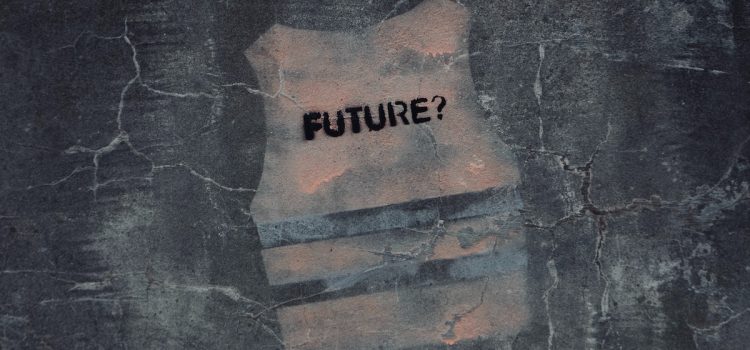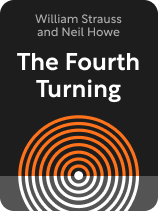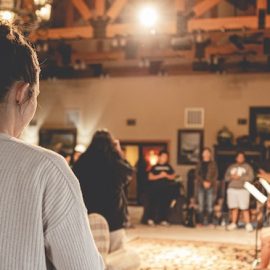

This article is an excerpt from the Shortform book guide to "The Fourth Turning" by William Strauss and Neil Howe. Shortform has the world's best summaries and analyses of books you should be reading.
Like this article? Sign up for a free trial here.
Does history follow a pattern? If so, can we make solid predictions about the future?
In The Fourth Turning, historian William Strauss and consultant Neil Howe explain how Anglo-American history follows a pattern of four 15- to 25-year periods, called Turnings. They wrote during a Third Turning, and they made predictions about the Fourth.
Keep reading to learn the Fourth Turning predictions they made and how accurate they turned out to be.
The Fourth Turning Predictions
If you’ve ever noticed that history seems to repeat itself over the course of centuries, you may be wondering what causes that pattern—and how it may play out in the future. That’s how Strauss and Howe approached their book.
The authors made the Fourth Turning predictions in 1997, during the Third Turning (the Culture Wars in America), which began in 1984. The authors roughly estimated that the Third Turning would last through 2005 but acknowledged that it could end a few years earlier or later.
The authors predicted that the Fourth Turning—a Crisis—would begin within the first few years of the 21st century, around 2005. Because the catalysts for a Fourth Turning are always foreseeable based on the trends that are established during the Unraveling, the authors make a handful of predictions about what the next catalyst might look like:
A terrorist attack by a foreign group purporting to have nuclear weapons, leading the US to declare war and begin searching people’s homes. Suspicions that the president fabricated the event would lead to a nationwide strike and the loss of foreign capital.
(Shortform note: This prediction bears a striking resemblance to the September 11, 2001, terrorist attack on the World Trade Center. As the authors suggest in the book, there were some warnings of this attack in advance, including a memo sent to the FBI by Special Agent Kenneth Williams in July of 2001 warning of a potential terrorist plot by Osama Bin Laden. The memo was not acted upon, and experts have suggested that it could have been used to mitigate or prevent the September 11 attack if it had been dealt with properly. However, Neil Howe has noted that the attack didn’t have the lasting impact of a Crisis catalyst.)
A new, highly contagious virus spreads, resulting in significant deaths and causing the government to create and enforce quarantines. The National Guard is deployed to isolate areas hit hardest by the disease, and the president is pressured to declare martial law.
(Shortform note: As of March 27, 2023, COVID-19 had claimed over 1,150,000 American lives, and though the National Guard was not deployed and martial law was not declared, most state governments issued stay-at-home orders. This pandemic occurred too late in the Turning to serve as the catalyst but still contributed to a major shift in the country’s culture and mood and may comprise part of the Turning’s climax.)
Conflicts in and around Russia result in civil wars and the capture of American diplomats, leading the US to send ships into the Black Sea and Congress to consider reinstating the draft.
(Shortform note: In 2014, Russia annexed Crimea, leading to armed conflicts in the area, and in February 2022, the country invaded Ukraine, sparking a full-scale war. Though the US has limited its involvement to financial and humanitarian aid, a few Americans have been captured by Russia, and some have indeed wondered if Congress may reinstate the draft. This conflict also occurred too late to be the catalyst but may be contributing to the climax.)
The authors note that these exact scenarios are unlikely and that, whatever does happen, the nation will be able to mitigate it before it becomes truly devastating. However, it will arise from some problem that the country had failed to deal with soon enough, which will spark outraged calls to action.
(Shortform note: As discussed above, Neil Howe has identified the 2008 financial crisis as the catalyst for this Crisis Turning. As the authors predicted, the nation was able to avoid total cataclysm, but it experienced an undermining of public faith in financial institutions that has continued throughout the Turning.)
After the Catalyst
As a result of the catalyst, the authors predicted that people would lose all faith in the government, struggle financially and begin to panic about their future and that a recession or depression may occur. People will have to form a new social order, peacefully or otherwise.
One political party will achieve a decisive win early in the Crisis and will maintain its power throughout the Turning. Its leaders will exaggerate and deliberately exacerbate the country’s problems to accelerate change and enact a more and more extreme agenda.
At the beginning of the Turning, income inequality will stop growing. Toward its end, the economy will begin to recover and may become stronger than ever. It will be more unionized and more independent from the global economy. The public will again trust the nation’s institutions and demand that they restrict choices by standardizing certain options in goods and services and by establishing a single dominant political party to relieve people of the onus of having to choose.
The rights of certain groups will come under attack by powerful organizations. Criminal justice will become increasingly harsh, and the harming of innocent people will become acceptable collateral damage for protection against those considered dangerous to society.
| What the Authors Got Right—And Wrong Several of the authors’ predictions about the unfolding of the Fourth Turning haven’t yet come true. In contrast to their prediction about a single party maintaining dominance throughout the Crisis, America saw Republican Donald Trump win after two terms from Democrat Barack Obama, and then another Democrat win in 2020 with Joe Biden. Additionally, income inequality has not slowed but has instead continued to grow. In 2021, the wealthiest 10% of Americans held more than two-thirds of the nation’s wealth, while the bottom 50% held just 2.5% of the wealth. Union membership has also fallen even though research suggests that public support for unions is nearly the highest it’s ever been. However, as the authors predicted, attacks on the rights of certain groups have increased in the past few years. In June 2022, the Supreme Court overturned Roe v. Wade, which guaranteed people the right to abortion. Hundreds of bills targeting LGBTQ+ rights have been introduced by state lawmakers, and hundreds of others have been introduced that seek to impose greater restrictions on voting—measures that have been shown to have a disproportionate impact on Black voters. |
Through some combination of larger conflicts, the nation’s issues will coalesce into one large problem that forms the climax of the Crisis. People will unify around this problem, setting aside differences for the purpose of healing the nation and putting it on track for a new rebirth in the upcoming High. Whether the results of the Crisis’s resolution are positive or negative, the nation will be unrecognizable from what it was at the beginning of the Crisis.

———End of Preview———
Like what you just read? Read the rest of the world's best book summary and analysis of William Strauss and Neil Howe's "The Fourth Turning" at Shortform.
Here's what you'll find in our full The Fourth Turning summary:
- How Anglo-American history follows a pattern of four 15 to 25-year periods
- How the behaviors of different generations define these Turnings
- Predictions about the next Turning—a Crisis






